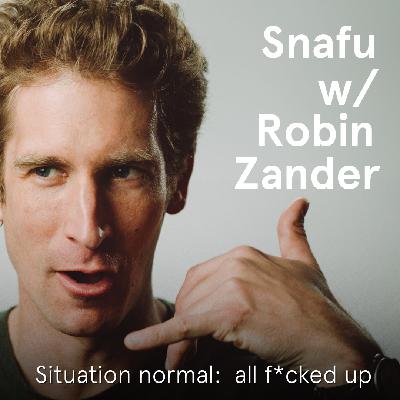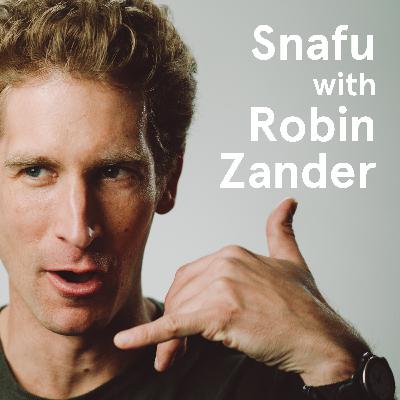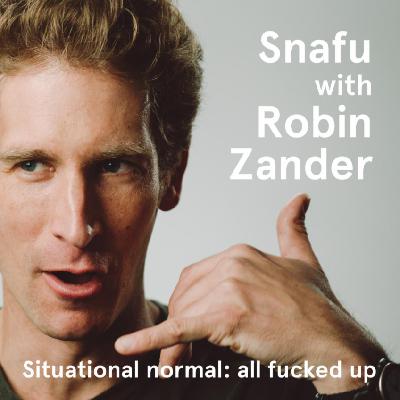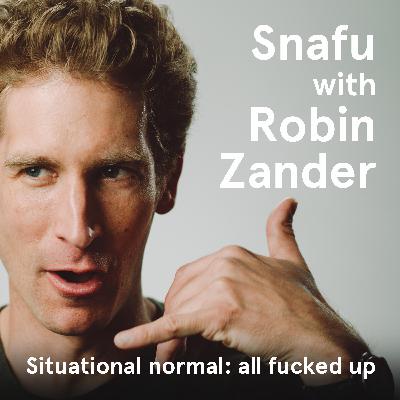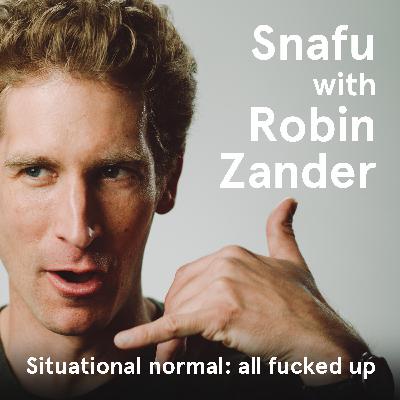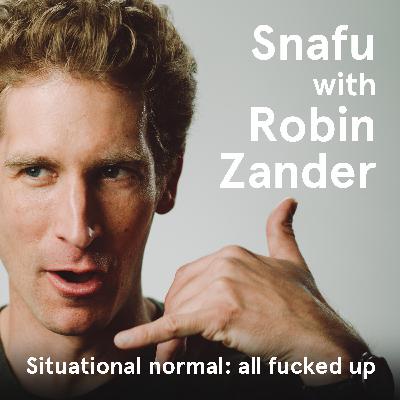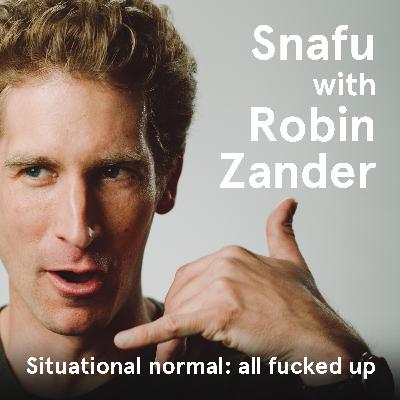Today Was Fun with Bree Groff — How to Design for Better Work
Description
Welcome back to Snafu with Robin Zander.
In this episode, I’m joined by Bree Groff, consultant, writer, and author of Today Was Fun.
We talk about why mischief belongs at work, how humor and flirtation create real psychological safety, and the bold design choices behind her unforgettable book cover. Bree shares how she moved from CEO roles to full creative freedom, and how that shift helped her find her voice. We discuss marketing in 2025, how AI might reshape work and writing, and why personal agency, not hours, is the most important lever in a workweek.
Bree offers practical insights for leading with joy, helping kids future-proof their lives, and deciding what’s “enough” in a world that always demands more. She also reflects on writing the book while parenting, consulting, and building her own business, and what it means to embrace the joy of not knowing what comes next.
Bree will also be joining us live at Responsive Conference 2025, and I’m thrilled for you to hear her on stage.
If you haven’t gotten your tickets yet, get them here.
Books
-
Trickster Makes This World: Mischief, Myth, and Art — Lewis Hyde
-
Anansi Boys — Neil Gaiman
-
Work Less, Do More: Designing the 4-Day Week — Alex Pang
-
Shorter: Work Better, Smarter, and Less―Here's How — Alex Pang
-
Rest: Why You Get More Done When You Work Less — Alex Pang
-
Perennial Seller: The Art of Making and Marketing Work that Lasts — Ryan Holiday
-
Today Was Fun — Bree Groff
-
The 4-Hour Workweek —Tim Ferriss
-
Responsive: What It Takes to Create a Thriving Organization — Robin Zander
Podcasts/Videos
-
TED Talk: How to Start a Movement — Derek Sivers
Start (0:00 )
The Story Behind the Book Cover (00:07 .822)
-
Robin opens with a personal observation: Bree’s nails are the exact shade of green as her book cover – a smiley face on a highlighter yellow-green background.
-
Bree laughs and explains the choice behind the bold, offbeat cover:
-
It was designed by Rodrigo Corral, known for iconic covers like The Subtle Art of Not Giving a Fck*.
-
When she first saw it (at 3 a.m.), she gasped and loved it — it stood out and made a statement.
-
The smiley is cheeky but not cheesy; it suggests optimism with a bite.
-
The color isn’t quite yellow — it’s that “gross green” that almost hurts to look at. That tension is the point.
-
“It’s got some edge... not your straight-up yellow.”
-
This tension – bright and fun, but just a bit weird or off – is exactly the tone she wanted for the book and for herself.
The Wink That Makes Work Fun Again (01:51 )
-
Robin brings up his old graduation photo: he posed slightly off-center, adding a knowing smirk. At the time, he didn’t know why he chose that shot, but later realized it made people curious, like a small rebellion baked into something formal.
-
Bree relates completely. She talks about:
-
Why humor and a bit of mischief matter in professional settings.
-
The concept of flirtation – not romantic, but playful:
-
A wink in a branding campaign.
-
A reference that only a few insiders get.
-
A running joke between team members.
-
Mischief creates risk and intimacy, both essential for real connection.
-
These small acts of rebellion are actually signs of psychological safety and creativity.
-
“You need a little bit of flirtation at work... a wink that says, ‘we’re in this together.’”
-
She argues that fun isn’t a distraction – it’s a sign that something is working.
Tricksters, SNAFUs, and the Role of Risk in Work (05:49 .219)
-
Robin brings in the idea of the trickster, from folklore characters like Anansi and Coyote to his podcast title SNAFU. These figures don’t follow the rules, and that’s what makes them interesting.
-
Bree expands on the connection between play and professionalism:
-
There’s a cultural script that says “seriousness = competence.”
-
But in her experience, some of the best work moments involve play, risk, and even slight embarrassment.
-
Being human together – laughing too loud, saying something weird, trying something bold – is what builds bonds.
-
Real joy at work comes from these edge moments, not the sanitized ones.
-
“You have to go beyond professionalism to access the most fun parts of work.”
-
They agree that creating spaces where people can color outside the lines is not just fun – it’s productive.
Beyond Palatable: From People-Pleasing to Belonging (08:29 .068)
-
Robin shares a lesson from his mother: that once you leave high school, life is no longer a popularity contest. But he’s realized that in business, especially branding, people often still chase approval and “likability.”
-
Bree offers a deeper lens:
-
Being “palatable” – meaning universally acceptable – is actually the opposite of being memorable.
-
People who try to please everyone end up blending in.
-
What she wants is to be delicious, or at least striking, not for everyone, but unforgettable to some.
-
She draws a line between
-
Fitting in: performing a version of yourself to meet social norms.
-
Belonging: being your full, vibrant self and finding others who welcome it.
-
“Please don’t chew me up. I’m not palatable — I’m not trying to be.”
-
This philosophy shows up in her book’s voice, design, and in how she shows up in the world.
Selling a Book in 2025: Bottles in the Ocean (12:21 .838)
-
What's it been like trying to promote a book in 2025?
-
Bree describes her strategy as both scrappy and intuitive:
-
She thinks of book marketing as sending “a million notes in bottles” – not knowing which will land.
-
Her approach includes:
-
Partnering with a publicist.
-
Creating swag kits with branded gear.
-
Pitching the book to “chatty” communities (e.g., alumni groups, newsletters, podcast audiences).
-
Posting regularly, even when it feels silly.
-
She cites the idea of “luck surface area”: the more interesting things you do, and the more people you tell, the more chances something will stick.
-
“You do interesting things and talk about them a lot... and maybe something takes off.”
-
Still, she acknowledges that luck plays a role. There’s no guaranteed playbook, just momentum and hope.
Is It Worth Talking About? (14:47 .63)
-
Robin references a quote from Tucker Max: that all marketing, in the end, is just word-of-mouth.
-
Bree shares what guided her during the writing process:
-
Her goal was to create something remarkable — in the literal sense:
-
Something people would want to talk about.
-
No

